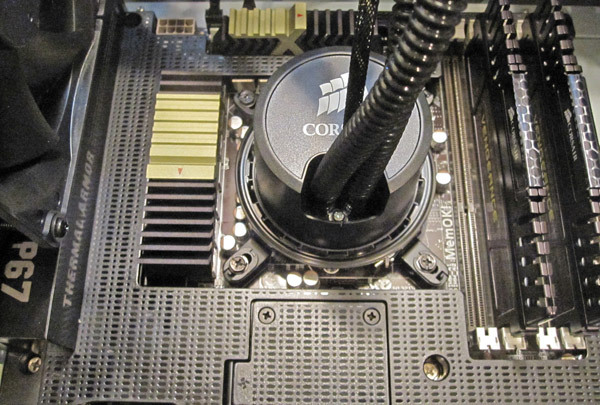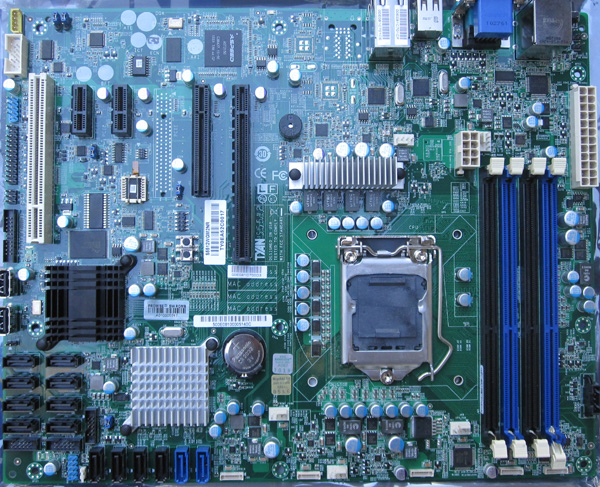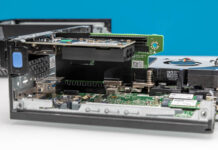Recently ServeTheHome.com looked at two different Intel P67 chipset boards, the ASUS P67 Sabertooth consumer offering and the Tyan S5512WGM2NR server motherboard. The ASUS P67 Sabertooth is marketed by ASUS as using high-quality components for better stability in the enthusiast space. The Tyan S5512WGM2NR was the first Tyan (and C204) motherboard reviewed on ServeTheHome and is targeted at the UP market. After reviewing both, it was noted that they would be subjected to longer-term stability testing than normal.
Test Configurations
I configured the two systems according to typical usage scenarios. The ASUS P67 Sabertooth received two NVIDIA GPUs and the Tyan S5512 added a Xeon E3 CPU with eight drives to fill its onboard LSI SAS2008 controller.
ASUS P67 Sabertooth Stability Test Platform
- CPU: Intel Core i7-2600K
- Motherboard: ASUS P67 Sabertooth TUF
- Cooling: Corsair H50
- Memory: 2x Corsair Vengeance 1600MHz C9 4GB DIMMs
- OS Drive: Corsair Performance 3 Series P3-128 120GB SSD
- GPUs: 2x EVGA GTS 450
- Enclosure: Antec Nine Hundred
- Power Supply: Seasonic X750, 750w power supply
Tyan S5512WGM2NR Stability Test Platform
- CPU: Intel Xeon E3-1280
- Motherboard: Tyan S5512WGM2NR
- Cooling: Stock Intel Retail Xeon E3 heatsink/ fan
- Memory: 8GB ECC 1333MHz CL9 DDR3 (4x2GB)
- OS Drive: OCZ Agility 2 120GB
- Additional Drives: 8x Hitachi 2TB 5K3000
- Additional NICs: Intel Gigabit CT PCIe x1 network adapter
- Enclosure: Norco RPC-4224
- Power Supply: Seasonic X650 (650w Gold level power supply)
These systems represent fairly mid-range configurations of what one would expect to be built upon the respective motherboards. The question is, how did they fare under load for weeks? To generate load I ran the popular Folding@Home clients on the two platforms 24×7 for several weeks. It is important to at minimum do this because over time most cooling solutions succumb to heat soak further stressing the components.
ASUS P67 Sabertooth Stability Results
As a product that ASUS sells under its TUF line, one might expect that the P67 Sabertooth would fare well in stability testing. ASUS backs the P67 Sabertooth with a five year warranty which is well beyond standard in the industry. Next, the board features “TUF Components” including Alloy Choke, Cap. & MOSFET; Certified by Military-standard and for Tough Duty. The first week I had the board I used a stock clocked Core i7-2600K and quickly realized that nothing would happen in terms of stability. After that first week I decided to up the ante and overclock the board.

As I was using a mid-range cooling solution, the Corsair H50, I could not push the chip to its maximum potential as the 24×7 workload would quickly expose cooling as a major stability factor. Instead I used ASUS’s automatic overclocking settings then moved the bclk down to 101MHz for a 44x 101MHz setup. Although the CPU could pass most stability testing with the automatic settings, Folding@Home was unable to maintain uptime of greater than 36 hours. It is fairly common that F@H stresses components enough to expose stability problems.
Moving down to 4.4GHz the P67 Sabertooth had no problem running two GPU clients and a CPU client non-stop for four weeks. The key here was to ratchet back the overclock slightly from fully automatic settings. After this was done, the system did not crash. Temperature monitoring was easier than many other boards since the P67 Sabertooth had so many sensors collecting data. Overall, this was a good experience.
Tyan S5512WGM2NR Stability Results
For a period of time Tyan’s stability became a concern in the industry. With that being said, Tyan seems to have undergone a significant program to improve their product quality over the past few years. With the Tyan S5512WGM2NR stability has generally been good.

Not long after setting the test platform up I noticed, through the IPMI 2.0 interface, that the CPU temperatures with the E3-1280 and retail cooling solution were having a rough time coping with the load and resultant heat generated by the F@H client. One thing I had to do during the process was to speed up the mid-plane fans in the Norco chassis to blow more air over the stock Intel cooler and LSI SAS2008 chip. The whole process was uneventful (a good thing) except for one aspect, the SAS2008 chip. With onboard RAID Tyan provides great expandability built in. One thing I found was that with the heat generated by the CPU one needed to provide sufficient airflow over the components to ensure everything worked properly. This should be a given in any server environment, but it seems especially so when the board in question has an onboard RAID controller. The bottom line here is that the Tyan S5512WGM2NR remained stable for weeks when proper airflow was provided.
Conclusion
Overall both ASUS and Tyan did a good job with their respective boards. I have some experience with unstable LGA1155 platforms that will not be reviewed on this site. ASUS’ P67 Sabertooth adds some solid monitoring features which can be an important factor in preemptive maintenance. On the server side, Tyan’s S5512WGM2NR provides a solid UP server platform so long as one kept the SAS2008 chip cool along with the Xeon E3 CPU. It is nice to see that manufacturers are taking stability very seriously these days.




Can you please test the TYAN S5512 (S5512WGM2NR) with VMware ESXi (note the i) and let me know if it runs? Also can you please test if VM Passthrough works (with the built-in SATA III and the LSI board)?
Thanks!